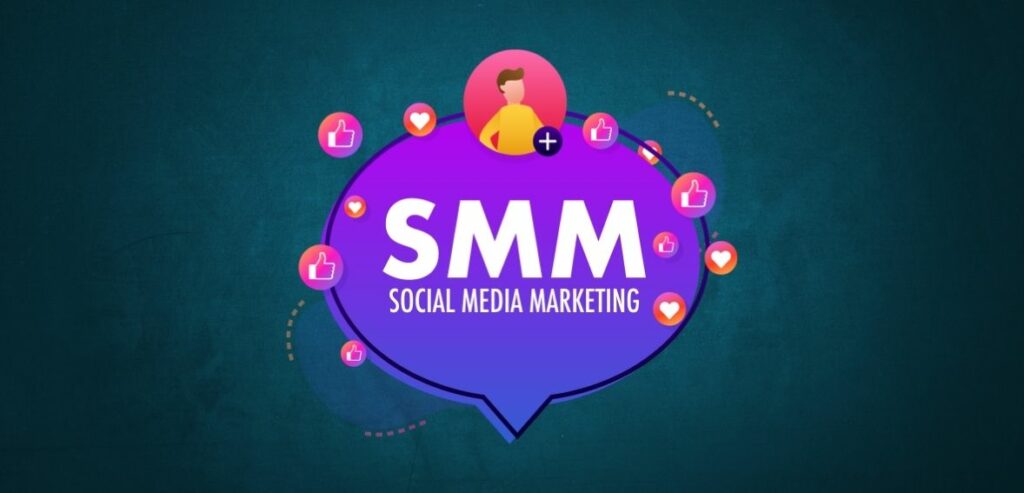Adapting to emerging trends is essential to staying competitive and creative in social media marketing. 2024 is already in full swing, and the social media marketing space is abuzz with debates on the next big thing. Almost every social media marketer would agree that this year is set to witness some fantastic transformative shifts.
Marketers look forward to redefined strategies that will reshape digital marketing as a profession. Continuous technological advancements, changing consumer behaviors, and evolving platform dynamics will likely set the stage for an exciting year ahead.
In this article, we will delve into the upcoming social media marketing trends for 2024 by examining 15 trends that are expected to dominate. From integrating new marketing technologies to a more in-depth understanding of user preferences, these trends offer insights and strategies that will empower marketers even further.
What Makes Up Social Media Trends?

Trends are more than just fleeting moments – these are critical phenomena that captivate users’ attention and shape the degree of content consumption. They often leave a lasting impact on the user, leading to its recreation and furthering the impact of social media. Several factors contribute to developing and succeeding in a viral social media trend, mixing user behavior, platform features, and culture, especially pop-culture dynamics.
The following are a few elements that dictate social media trends:
User Engagement and Participation
- Viral Potential: Trends often possess the contagious quality of going viral, spreading rapidly across most platforms. Their popularity is fueled by user engagement and sharing.
- Audience Relevance: Users relate with trends when they work in unison with the interests, preferences, and demographics of the target audience. This, in turn, ensures widespread participation.
The Role of the Platform
- Algorithm Function: Social media platforms are driven by complex algorithms and play a pivotal role in pushing trends towards virality. The algorithm plays the role of a promoter in showcasing content to a broader audience based on engagement metrics.
- Features and Innovations: Recently popularized features like Instagram Stories or TikTok’s short-form videos can contribute towards creating trends by providing users with innovative ways to create and consume content.
Cultural and Societal Influences
- Timeliness and Relevance: Trends often arise from current events, societal shifts, or cultural moments. They gain momentum by tapping into the collective consciousness of social media users. A couple of bright examples of this feature are moment marketing and meme marketing.
- Inclusivity and Diversity: Trends that embrace inclusivity and diversity tend to resonate more widely, reflecting users’ varied perspectives and experiences. It is safer to avoid trends that harm or intend to harm any group or individual.
Creator Influence
- Influencer Impact: Influencers and content creators often serve as trendsetters. Hence, brands trying to increase their visibility tend to collaborate with them. The brands leverage their audience and creativity to start and popularize trends.
- Collaborative Creation: Trends thrive when users actively participate in their creation. The more people engage with a trend, the more successful it is. It builds a sense of community and shared creativity among users of all levels.
Top Social Media Marketing Trends to Expect in 2024

Social media is showing no signs of slowing down. It would not be too ambitious to say that social media is the number one source of entertainment for many, especially young millennials and Gen-Z. Keeping note of how social media has evolved over the past five years and its current pace, the following can be expected as the top social media trends to emerge in 2024.
- AI-Powered Social Media Management
Artificial intelligence’s integration into social media management will change how marketers approach daily tasks. Almost 80% of marketers say that AI applications and websites have significantly increased workflow efficiency and saved time.
Recent years have seen a notable increase in specific AI applications such as ChatGPT and Copy AI for social media’s text content generation. A Hootsuite analysis indicates that 75% of social media marketers intend to entirely rewrite and update text using AI in 2024—a startling 103% rise from 2023.
Many social media marketers now use AI to generate captivating captions, develop new campaign ideas, and perform other tasks.
- AI Image Generation
Using AI to edit already-taken photos is becoming increasingly common; one of the most well-known AI-powered picture editors is Canva. Users can easily modify images with Canva‘s AI features, which include object removal, image expander, and background change.
Similarly, Generative AI has made image generation easier with tools such as DALL-e and Stable Diffusion, which have become valuable to graphic designers. AI images are here to stay, whether used for image references, ideas, or creation.
The use of AI in social media duties extends beyond content production. It includes planning content, monitoring social media, researching competitors, gathering and analyzing data, and reporting on key performance indicators. Social media managers can operate more efficiently by incorporating AI into these areas.
- TikTok’s Continued Popularity Among Gen Z
While Facebook remains the most popular social media platform overall, the under-25 demographic is increasingly gravitating towards TikTok. Facebook’s user base under 25 years has declined to under 18%, signaling a significant preference shift among younger generations. In contrast, TikTok has emerged as the app of choice for Gen Z, with 78% of them using the platform in 2023 and two-thirds using it daily.
Influencers like the D’Amelio sisters, Addison Rae, and several local influencers have made their mark on TikTok by launching trends and collaborating with well-known brands. Brands such as Panera Bread, Folgers Coffee, and Dunkin’ Donuts have successfully launched ads on TikTok that target Generation Z. The fact that about a quarter of small firms using TikTok for marketing reported a good return on investment highlights how well the platform works to connect and reach younger audiences.
- Social media for Customer Support
For today’s consumers, prompt customer service has become essential. Social media platforms have become the primary avenue for customer service, meeting the needs of customers who want prompt, individualized attention. Many firms are deploying AI-powered chatbots for customer service on social media to address the demand for prompt responses.
These chatbots use conversational AI to reply to messages on different social media platforms, whether they are posts or direct messages. As proven by an Instagram food influencer who utilized a chatbot to interact with thousands of comments and provide each user with a personalized recipe, their possibilities go beyond automated responses. Customer service on social media is more productive and efficient when AI and human-like engagement are combined.
- Continued Growth of Social Media Usage
Social media is used by about 5 billion people worldwide, which makes up more than 61% of the world’s population. From August to October 2023, an average of 9.6 users would join social media per second, a 4.5% rise from the previous year. By 2025, social media viewership is expected to surpass conventional TV’s due to its steady rise.
The average user spends over a third of their online time on social media. Calls for social media detoxification and programs encouraging less reliance, such as the National Day of Unplugging and the digital minimalism movement, have been sparked by the increasing reliance on social media.
- Social media for Advertising
The amount spent on digital advertisements has increased significantly during the last five years as more users are signing up to social media platforms. In 2024, it is expected that businesses in the US alone will spend billions of dollars on paid social media content and advertising. This means that targeted and paid ads will likely take up a significant portion of the marketing budget.
While businesses already spend a good amount on social media and TV ads, projections show that by the end of the decade, the proportion of spending on social media will be much higher than that on television.
It is anticipated that Facebook and Instagram parent company Meta will rule the social media advertising space. This change has led to social media’s current position as the leader in the advertising sector, with its influence extending across multiple industries and media platforms.
- Increased Prevalence of Augmented Reality
The integration of augmented reality into social media platforms is gaining momentum. AR filters and effects have already become popular on platforms like Instagram and Snapchat, but in 2024, we can expect even more advanced and immersive AR experiences.
From virtual try-on experiences for products to interactive games juxtaposed in the real world, AR is set to change how users engage with content on social media. With tools like Apple’s Vision Pro and Meta’s VR Headsets, users would be able to check their social media feeds from these glasses – making AR a more approachable reality.
- AI Influencers on the Rise
Virtual and AI-generated influencers—computer-generated personas with distinct personalities and styles—are growing in power in social media. To take advantage of their distinctiveness and capacity for audience engagement, brands are working with virtual influencers on marketing campaigns more and more. The distinction between digital and real-world productions is becoming hazier due to this trend, which creates new avenues for artistic expression and brand image on social media.
- Short-form Video Will Continue to Dominate
In 2024, short-form videos, best pushed by sites like TikTok, will remain dominant. User interaction is dominated by concise, interesting information on various social media channels. This trend demonstrates its effectiveness for narrative and entertainment.
The popularity of short-form videos will continue despite people’s decreasing attention spans. Producers and advertisers will keep using eye-catching or quirky visuals to draw viewers. The format’s broad acceptance highlights the short-form video’s ongoing dominance in defining the social media experience and its continuous popularity and influence.
- Social Commerce to Become Inseparable
The fusion of social media with e-commerce, or “social commerce,” is expected to increase even more in 2024. By seamlessly integrating commerce functions, platforms improve user experiences by allowing customers to browse and purchase items without leaving the app. Influencers showcase and sell products in real-time during live shopping events, which are becoming increasingly popular. This creates a dynamic economy on social media.
Converging social engagement and ease of shopping highlights how digital retail has evolved, creating a more dynamic and captivating e-commerce environment inside social media.
Social Media Marketing Trends for 2024 and Beyond

One thing becomes clear as we wrap up our in-depth understanding of the social media marketing trends in 2024: success in the digital sphere wholly depends on adaptability. Social media marketing is changing and dynamic, requiring continuous attention to detail and a proactive approach rather than reactive.
The secret is to recognize and take advantage of these trends to create meaningful relationships with target audiences, whether using AI to create better user experiences or embracing the power of virtual personas. Marketers who are aware of new trends are well-positioned to prosper in a world where change is the only constant.
2024 is an opportunity for marketers to start towards a path that corresponds with the current trends in social media marketing, as it collaborates creativity, strategy, and adaptability.
![]() Recommended: Common Social Media Marketing Mistakes To Avoid
Recommended: Common Social Media Marketing Mistakes To Avoid
FAQs
What is the Future of Social Media in 2024?
The future of social media in 2024 includes continued changes, with augmented reality, virtual influencers, and artificial intelligence platforms taking center stage. Users can anticipate more engaging experiences and relatable content emphasizing meaningful connections. This, in turn, aims to shape a new generation of social media marketing.
What is the AI Social Media Trend in 2024?
AI will dominate social media marketing trends in 2024, from generating captivating captions to creating images quickly. AI applications will surge, including text rewriting, image generation, and content scheduling. AI offers marketers efficient tools for personalized engagement, content creation, and simplified management of various social media tasks.
What are the trends for Gen Z in 2024?
Gen Z in 2024 will continue to gravitate towards TikTok, spending significant time on the platform. Marketers should use the platform's popularity to increase their TikTok marketing investments. To appeal to this digitally savvy generation, they must launch their brands into trends, including short-form videos, influencer collaborations, and meaningful, engaging content.

